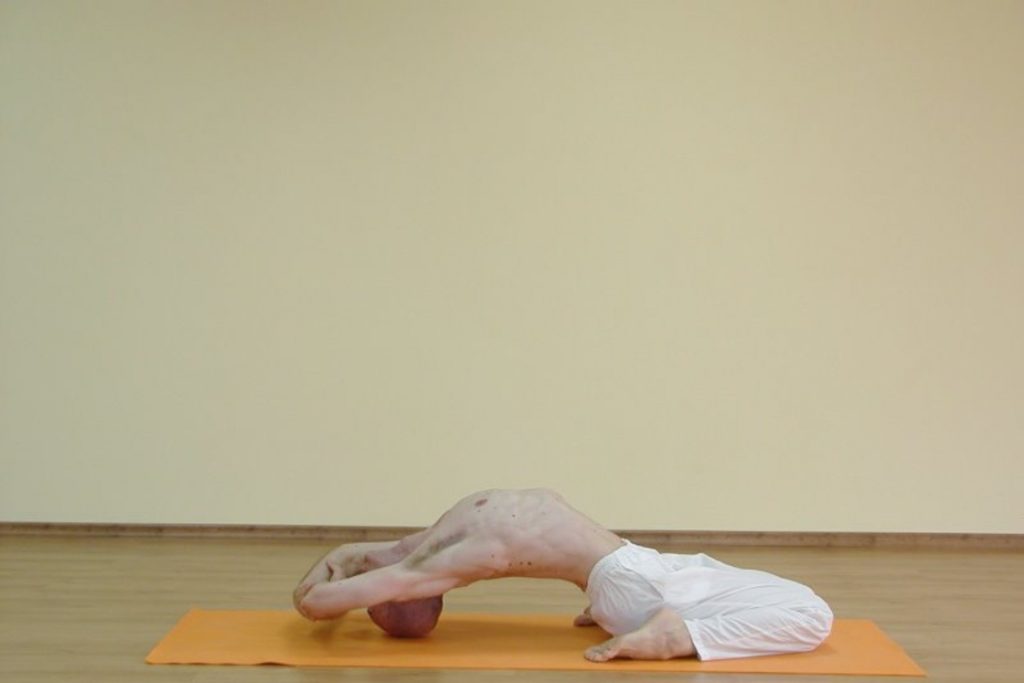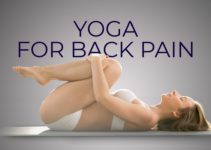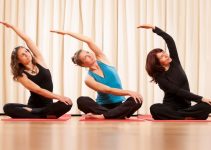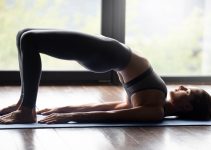
Paryankasana is an intermediate backbend posture with legs in Virasana. Consistent practice of this asana helps to open the chest and the shoulders. It is one of those poses which is seldom taught but has great importance for your thoracic back.
Good flexibility in the ankle, knee, and hip joints, as well as the quadriceps, is required to be stable in Paryankasana. But don’t worry if you aren’t flexible, you will find it easy with the props & modifications mentioned below.
Meaning
The term Paryankasana is stemming from the Sanskrit word Paryanka that denotes ‘a couch, bed or sofa’, and asana means ‘pose’. The Couch Pose gets its name due to the resemblance of the shape of one’s body in this pose.
In Ashtanga yoga, couch pose is a supine yoga pose of the intermediate series. It’s mainly used to release the tension of upper body muscles after the forward bend poses.
Paryankasana Practice Guide
Follow the points below to safely practice paryankasana:
Precautions & Contraindications
- Although this is a variation of Hero Pose, do not practice paryankasana immediately after eating.
- Keep away from practicing this pose if you have recent knee or ankle injury.
- If you have a slip disc issue, stiff lower back, and neck then this pose should be avoided.
- Considered bad for someone with severe sciatica, hypertension, and cardiac issues.
- Not be practiced during pregnancy as it would be difficult to lean back with the fetus.
- Avoided in heavy menstruation as it can increase the flow of blood.
- Completly avoid this pose if suffering from a severe headache or migraine.
Preparatory Pose
- Supta Baddha Konasana (Reclining Bound Angle Pose)
- Paschimottanasana (Seated Forward Bend Pose)
- Matsyasana (Fish Pose)
Iyengar Guru Ji in his book light on yoga has taught Paryankasana as a continuation of Supta Virasana – reclining hero.

How to Do Paryankasana
Follow the steps below to do Paryankasana:
1. Begin with Virasana
Firstly kneel on the mat with your knees together and thighs perpendicular to the mat. Sit with your hips between your feet and knees hip-width apart.
If you have discomfort in bringing your sit bones to the mat, use the modification mentioned below.
2. Recline on the back
Slowly arch back to lie down and make sure the arch should resemble the Matsyasana or Fish Pose. You can use any props under your thoracic spine.
Walk your hands back as you recline. Take your arms overhead with your hands clasped into your elbow, which is pressing into the mat to support the body while arching back.
3. Check your trunk & hold the pose
Finally, be sure that the crown of your head is resting gently on the mat. Also, make sure no part of the trunk is resting on the mat i.e. it should be elevated.
If your head is floating then you can use the props mentioned in modifications sections. Hold the pose for 30 seconds to 1 minute and take deep and mindful breaths.
4. Uncross your arms to release the pose
Release the posture by uncrossing your arms and bring the elbow back to the mat. Slowly lift the crown of your head and chin towards the chest, with your hands pushing the floor, come up.
Relax in Sashankasana (Rabbit Pose) or Balasana (Child Pose) for a few minutes.
Follow-Up Pose of Paryankasana
- Laghu Vajrasana (Little Thunderbolt Pose)
- Matsyasana in Padmasana (Fish Pose Variation in Lotus Pose)
Practicing Paryankasana gives intense stretch to the thighs, knees, and ankles, hence those with less flexibility at the knees and ankles may have little discomfort. For that reason, you can ease the tension in the muscles by relaxing in the Paschimottanasana, Baddha Konasana, and Savasana after coming out of this pose.
Props & Modifications
- If you have discomfort in bringing your sit bones to the mat, sit on a bolster or a cushion.
- You can place a bolster or a block behind you for comforting your thoracic spine. Make sure that as you recline, the prop is pressing into your back and is under your scapulae or slightly lower but not in the middle of your back.
- You can give comfort to your back support/props like a block or bolster under your head or lower back.
- For added support to the hips, hold your thighs together and tie a yoga belt around the knees. This modification not only makes you comfortable in the pose but also gives you the same benefits of the asana.
Paryankasana Benefits
1. Improves the flexibility of the leg
Undoubtedly this asana demands some flexibility at the knees and ankles. But holding this pose and repeated practice of it helps deeper knees and the feet flexion. It creates a deep stretch at the upper thigh area and gradually improves the flexibility of the quadriceps.
2. Therapeutic for lung and spinal conditions
It is therapeutic for asthma, chronic fatigue, and more, as the chest and lungs are fully expanded which increases the oxygen flow. It enhances the lungs’ capacity which gradually helps in practicing Pranayama. Besides this, it also relieves those with kyphosis issue.
3. Thyroid & Parathyroid Glands get activated
It gives a good stretch and expansion to the neck that eventually helps to activate the thyroid and parathyroid glands. Apart from this, Paryankasana makes the free flow of oxygen to throat and vocal cords. As a result, preventing the infections of the throat and improving voice quality by stimulating vocal cords.
4. Helps in digestion and relieving constipation
Paryankasana stretches the lower and upper abdominal muscles which lead to improved digestion and metabolism. It also promotes the flow of blood to the abdomen which stimulates the functions of prostate glands, ovaries, bladder, and kidneys. In addition to this, it cures the acidity, constipation, and flatulence.
5. Maintains Blood pressure
Paryankasana acts as an excellent therapy for one with low blood pressure as it helps to keep your blood pressure in check. As a practicing, this pose puts opens the heart and the lungs by releasing the blockages. It also works wonder for those with erratic blood pressure rise or falls. This posture is prescribed by experts to maintain healthy BP.
6. Ease menstrual discomfort or PMS
Paryankasana is recommended to be practiced 15 days before your moon cycle, as it helps to relieve the menstrual pain or Pre Menstrual Syndrome. When practiced pre periods, it relaxes the muscles of the lumbar and abdomen and prevent the bloating and cramps during your moon cycle.
7. Removes physical & mental stress
This pose is assumed to relieve the physical and mental stress as the oxygen-rich blood reaches the upper body organs like the lungs, neck, and brain. As a result, releasing all the tensions of the muscles and nerves. Finally, it calms down the brain and soothes the nervous system.
8. Awakens the Chakras
Consistent practice of couch pose direct the flow of Prana to the higher chakras. It eventually awakens the Vishuddhi or throat, Ajna or third eye, and Sahasrara or crown Chakra. It helps to bring creativity, intuitive power, and liberation, or self-realization. By activation of theses three chakras one gains the deeper knowledge and understanding of self and the universe.





Thank you found it really good